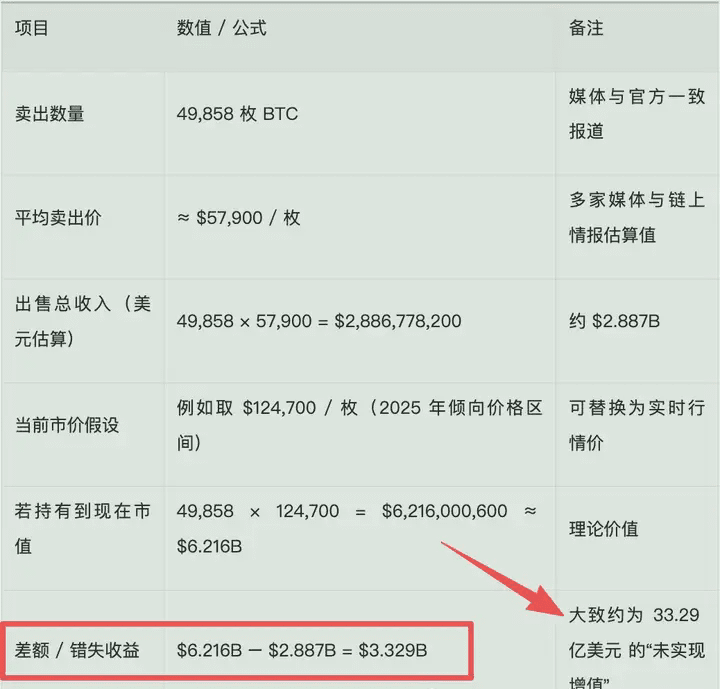In the past year, a shocking news in the crypto circle broke out: the Saxony authorities in Germany urgently liquidated about 50000 bitcoins and disposed of them in euros.
Someone immediately calculated the number of 'made tens of billions of dollars'.
There are also people who sigh, 'If this batch of bitcoins hadn't been sold, what would it be worth now' - what is the truth?
In this article, Yongqi will restore the entire process of this event: official announcements, timing of sales, market logic, reasons for selling, missed profits, institutional constraints, and future implications.
I hope to provide you with a deep report that combines data and thought.

Event restoration: who, when, how to sell?
1. Event origin: Film piracy case asset freeze
At the beginning of 2024, Saxony in Germany froze a large amount of bitcoin assets while investigating the Movie2K piracy case. Subsequently, official judicial procedures were initiated, and the assets were ultimately disposed of by the court.
2. Emergency liquidation: Rapid sales over three weeks from June to July
According to the report from Saxony's public security and judicial departments (consistent with media reports), Germany sold assets in batches from June 19 to July 12, 2024.
Total amount sold: 49,858 BTC (this figure is widely reported by the media)
Proceeds from the sale (official): approximately €2,639,683,413.92 (about 2.64 billion euros)
The media converted the dollar amount to about $2.8B, with an average selling price of about $57,900 per BTC.
3. Market environment and price background
During that selling window, the price of bitcoin experienced downward pressure from early June to mid-July 2024, dropping from ~$67,000 to around ~$55,000 (with fluctuations in the range).
The selling operation itself is considered to have a short-term impact on the market, and the media once referred to it as a 'pin insertion' or 'selling pressure source.'

Germany: 'How much did we sell / How much did we miss?'
Here are the detailed calculations:

Conclusion: Germany exchanged approximately 49,858 bitcoins for about $2.887B, while if held until the current market price, its theoretical market value would be approximately $6.216B, resulting in a missed profit of about $3.33B.
Of course, these figures are based on estimates (average selling price, current market price assumptions), but the magnitude and relative relationships are highly persuasive.

Why did Germany choose to sell? The institutional logic behind it
This operation may seem like it earned little but 'missed' a lot; so why did Germany undertake such an operation?
First, the legal procedure and risk control mechanism
The German judicial system supports the 'emergency liquidation' mechanism. If assets are held for a long time during unresolved judicial procedures, they may depreciate beyond a certain percentage, allowing the prosecution to initiate liquidation procedures. Media reports indicate this is the legal basis for their actions.
If not liquidated, continued price declines would expose the court and the state to greater risks.
Second, asset conversion, custody, and usage restrictions
The proceeds from the sale are held in trust by the court or relevant judicial departments (such as the Leipzig Regional Court) rather than immediately entering the treasury.
Due to the asset disposal being a criminal case, high-risk market operations cannot be casually engaged in and must be handled conservatively.
Third, concerns about market impact and staggered arbitrage
The German side clearly adopted a 'gentle selling / staggered selling' strategy to minimize market impact (rather than a one-size-fits-all large sell-off), according to official statements, 'entrusting banks to sell in a fair and gentle manner.'
Staggered selling can also help disperse the impact, avoiding a drastic one-time drop.
'Sold too early' vs 'Legal limitations': should we criticize?
'Sold too early'
If Germany had been able to hold until now, it could theoretically have gained an additional appreciation of around $3.3 billion. This means there is a significant opportunity cost in capital. Under the trend of viewing crypto assets as 'long-term digital gold' or 'national allocation assets', this kind of selling is considered a typical case of 'missing out on future returns.'
'Legal restrictions'
Germany's actions were not to make money, but to fulfill judicial procedural responsibilities and avoid the risk of asset depreciation. If the judicial authority causes the asset to depreciate sharply due to waiting, it could lead to public opinion questioning and liability risks. In many countries, judicial institutions do not have the capacity or authorization to 'long-term hold high-volatility digital assets.'
If this operation is purely driven by risk control and legal constraints, then criticizing 'selling too early' has ethical limitations.
However, if the future judicial system allows for more flexible disposal strategies (such as hedging mechanisms, regular release mechanisms, etc.), that would be a better path.

Conclusion
Germany's sudden sale of nearly 50,000 bitcoins appeared to be a massive sell-off in the eyes of the market at the time; however, looking back, it may become a classic case of 'missing out on billions in appreciation.'
But remember, this is not a simple comparison of 'buying and selling correctness', but a complex game of law, procedure, risk, and capital. From this, we can see:
The unavoidable nature of institutional constraints in national-level asset disposal
The amplification effect of opportunity cost in extremely volatile assets
How transparency, supervision, and public opinion influence judicial asset disposal strategies
Next time you hear 'How much did a certain country sell BTC for and how much did they earn?', don't rush to envy or criticize.
First, we must restore: how is the law, how is the system, what is the timing, how is the process.
Lastly: Many views in this article represent my personal understanding of the market and do not constitute investment advice$BTC $ETH #BNB市值超越XRP


